- Clone
- HIT3a (See other available formats)
- Regulatory Status
- RUO
- Workshop
- V CD03.05
- Other Names
- T3, CD3ε
- Isotype
- Mouse IgG2a, κ
- Ave. Rating
- Submit a Review
- Product Citations
- publications

-

Human peripheral blood lymphocytes stained with HIT3a FITC
| Cat # | Size | Price | Quantity Check Availability | Save | ||
|---|---|---|---|---|---|---|
| 300305 | 25 tests | £16 | ||||
| 300306 | 100 tests | £38 | ||||
CD3ε is a 20 kD chain of the CD3/T-cell receptor (TCR) complex which is composed of two CD3ε, one CD3γ, one CD3δ, one CD3ζ (CD247), and a T-cell receptor (α/β or γ/δ) heterodimer. It is found on all mature T lymphocytes, NK-T cells, and some thymocytes. CD3, also known as T3, is a member of the immunoglobulin superfamily that plays a role in antigen recognition, signal transduction, and T cell activation.
Product DetailsProduct Details
- Verified Reactivity
- Human
- Antibody Type
- Monoclonal
- Host Species
- Mouse
- Formulation
- Phosphate-buffered solution, pH 7.2, containing 0.09% sodium azide and BSA (origin USA)
- Preparation
- The antibody was purified by affinity chromatography, and conjugated with FITC under optimal conditions.
- Concentration
- Lot-specific (to obtain lot-specific concentration and expiration, please enter the lot number in our Certificate of Analysis online tool.)
- Storage & Handling
- The antibody solution should be stored undiluted between 2°C and 8°C, and protected from prolonged exposure to light. Do not freeze.
- Application
-
FC - Quality tested
- Recommended Usage
-
Each lot of this antibody is quality control tested by immunofluorescent staining with flow cytometric analysis. For flow cytometric staining, the suggested use of this reagent is 5 µl per million cells in 100 µl staining volume or 5 µl per 100 µl of whole blood.
- Excitation Laser
-
Blue Laser (488 nm)
- Application Notes
-
Additional reported (for the relevant formats) applications include: immunohistochemical staining of acetone-fixed frozen sections, immunoprecipitation, and activation of T lymphocytes4-7. The HIT3a antibody is able to stimulate T cell activation. The LEAF™ purified antibody (Endotoxin <0.1 EU/µg, Azide-Free, 0.2 µm filtered) is recommended for functional assays (Cat. No. 300314). For highly sensitive assays, we recommend Ultra-LEAF™ purified antibody (Cat. No. 300332) with a lower endotoxin limit than standard LEAF™ purified antibodies (Endotoxin <0.01 EU/µg).
-
Application References
(PubMed link indicates BioLegend citation) -
- Schlossman S, et al. Eds. 1995. Leucocyte Typing V. Oxford University Press. New York.
- Knapp W. 1989. Leucocyte Typing IV. Oxford University Press New York.
- Barclay N, et al. 1997. The Leucocyte Antigen Facts Book. Academic Press Inc. San Diego.
- Sedelies KA, et al. 2004. J. Biol. Chem. 279:26581. (Activ)
- Rivollier A, et al. 2004. Blood 104:4029. (Activ)
- Scharschmidt E, et al. 2004. Mol. Cell Biol. 24:3860. (Activ)
- Smeltz RB. 2007. J. Immunol. 178:4786. (Activ)
- Product Citations
-
- RRID
-
AB_314041 (BioLegend Cat. No. 300305)
AB_314042 (BioLegend Cat. No. 300306)
Antigen Details
- Structure
- Ig superfamily, with the subunits of CD3γ, CD3δ, CD3ζ (CD247) and TCR (α/β or γ/δ) forms CD3/TCR complex, 20 kD
- Distribution
-
Mature T and NK-T cells, thymocyte differentiation
- Function
- Antigen recognition, signal transduction, T cell activation
- Ligand/Receptor
- Peptide antigen bound to MHC
- Cell Type
- NKT cells, T cells, Thymocytes, Tregs
- Biology Area
- Immunology
- Molecular Family
- CD Molecules, TCRs
- Antigen References
-
1. Barclay N, et al. 1993. The Leucocyte FactsBook. Academic Press. San Diego.
2. Beverly P, et al. 1981. Eur. J. Immunol. 11:329.
3. Lanier L, et al. 1986. J. Immunol. 137:2501-2507. - Gene ID
- 916 View all products for this Gene ID
- UniProt
- View information about CD3 on UniProt.org
Related FAQs
Other Formats
View All CD3 Reagents Request Custom Conjugation| Description | Clone | Applications |
|---|---|---|
| APC anti-human CD3 | HIT3a | FC |
| Biotin anti-human CD3 | HIT3a | FC |
| FITC anti-human CD3 | HIT3a | FC |
| PE anti-human CD3 | HIT3a | FC |
| PE/Cyanine5 anti-human CD3 | HIT3a | FC |
| Purified anti-human CD3 | HIT3a | FC,IP,IHC-F,Activ |
| APC/Cyanine7 anti-human CD3 | HIT3a | FC |
| PE/Cyanine7 anti-human CD3 | HIT3a | FC |
| Alexa Fluor® 488 anti-human CD3 | HIT3a | FC |
| Alexa Fluor® 647 anti-human CD3 | HIT3a | FC |
| Alexa Fluor® 700 anti-human CD3 | HIT3a | FC |
| PerCP anti-human CD3 | HIT3a | FC |
| PerCP/Cyanine5.5 anti-human CD3 | HIT3a | FC |
| Pacific Blue™ anti-human CD3 | HIT3a | FC |
| Ultra-LEAF™ Purified anti-human CD3 | HIT3a | FC |
| PE/Dazzle™ 594 anti-human CD3 | HIT3a | FC |
| Spark UV™ 387 anti-human CD3 | HIT3a | FC |
| Spark Red™ 718 anti-human CD3 | HIT3a | FC |
| TotalSeq™-C1290 anti-human CD3 | HIT3a | PG |
| Brilliant Violet 605™ anti-human CD3 | HIT3a | FC |
| TotalSeq™-B1290 anti-human CD3 | HIT3a | PG |
Customers Also Purchased
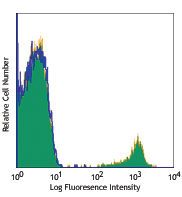

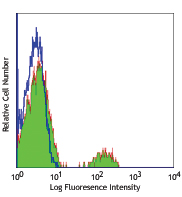
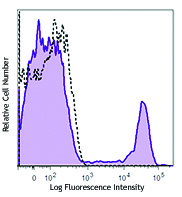
Compare Data Across All Formats
This data display is provided for general comparisons between formats.
Your actual data may vary due to variations in samples, target cells, instruments and their settings, staining conditions, and other factors.
If you need assistance with selecting the best format contact our expert technical support team.
-
APC anti-human CD3
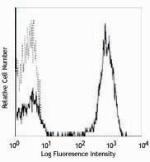
Human peripheral blood lymphocytes stained with HIT3a APC -
Biotin anti-human CD3
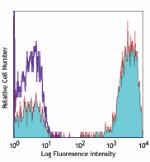
Human peripheral blood lymphocytes stained with biotinylated... -
FITC anti-human CD3
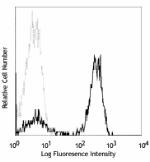
Human peripheral blood lymphocytes stained with HIT3a FITC -
PE anti-human CD3
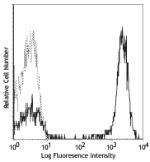
Human peripheral blood lymphocytes stained with HIT3a PE -
PE/Cyanine5 anti-human CD3
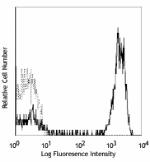
Human peripheral blood lymphocytes stained with HIT3a PE/Cya... -
Purified anti-human CD3

Human peripheral blood lymphocytes stained with purified HIT... -
APC/Cyanine7 anti-human CD3
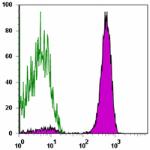
Human peripheral blood lymphocytes stained with HIT3a APC/Cy... -
PE/Cyanine7 anti-human CD3

Human peripheral blood lymphocytes stained with HIT3a PE/Cya... -
Alexa Fluor® 488 anti-human CD3
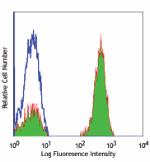
Human peripheral blood lymphocytes stained with HIT3a Alexa ... -
Alexa Fluor® 647 anti-human CD3

Human peripheral blood lymphocytes stained with HIT3a Alexa ... -
Alexa Fluor® 700 anti-human CD3
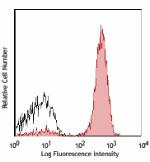
Human peripheral blood lymphocytes stained with HIT3a Alexa ... -
PerCP anti-human CD3
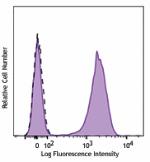
Human, lysed whole blood was stained with CD3 (clone HIT3a) ... -
PerCP/Cyanine5.5 anti-human CD3

Human peripheral blood lymphocytes were surface stained with... -
Pacific Blue™ anti-human CD3

Human peripheral blood lymphocytes stained with HIT3a Pacifi... -
Ultra-LEAF™ Purified anti-human CD3
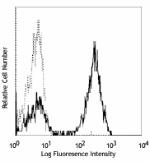
Human peripheral blood lymphocytes stained with LEAF™ purifi... -
PE/Dazzle™ 594 anti-human CD3
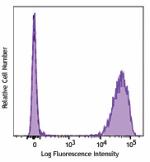
Human peripheral blood lymphocytes were stained with CD3 (cl... -
Spark UV™ 387 anti-human CD3

Human peripheral blood lymphocytes were stained with anti-hu... -
Spark Red™ 718 anti-human CD3

Human peripheral blood lymphocytes were surface stained with... -
TotalSeq™-C1290 anti-human CD3
-
Brilliant Violet 605™ anti-human CD3

Human peripheral blood lymphocytes were surface stained with... -
TotalSeq™-B1290 anti-human CD3
 Login / Register
Login / Register 













Follow Us